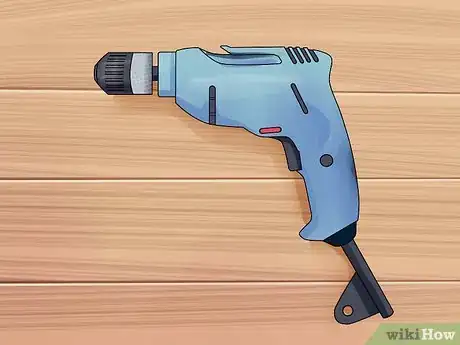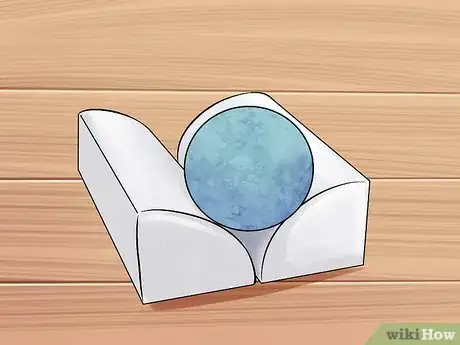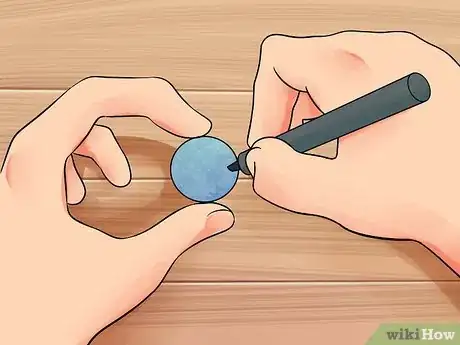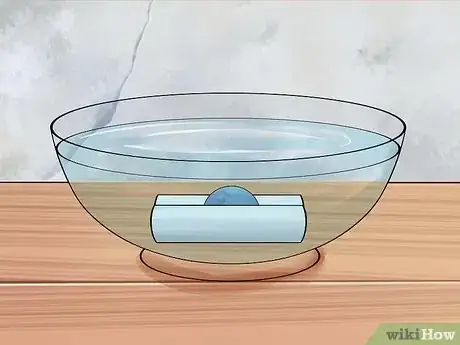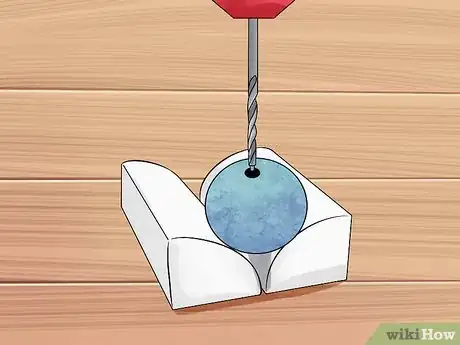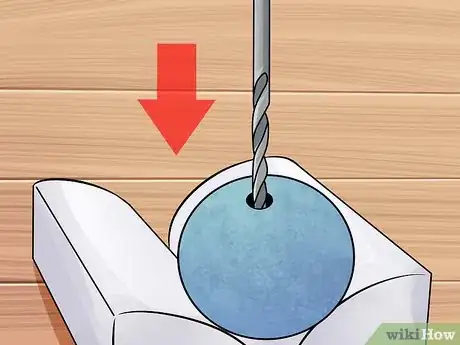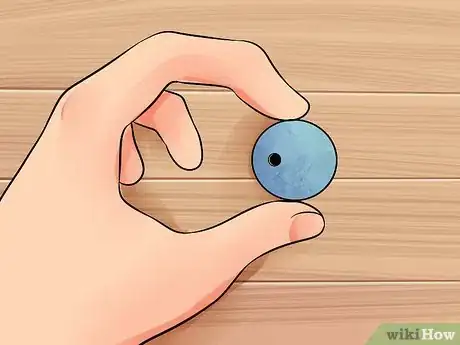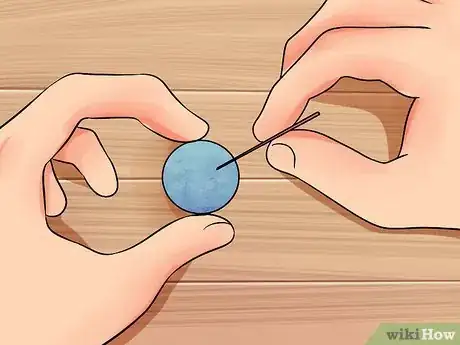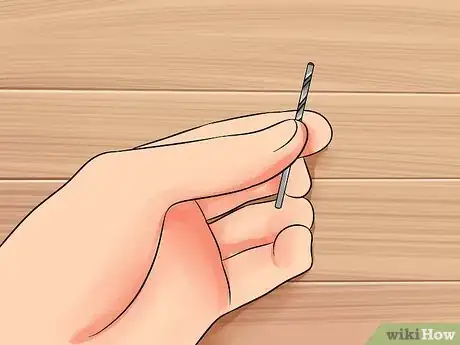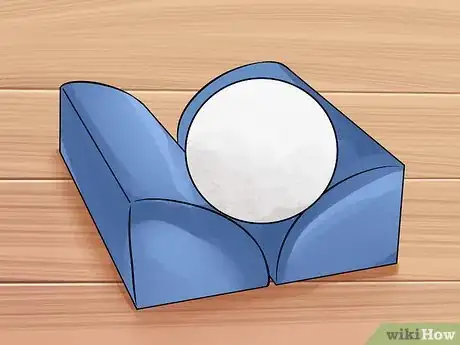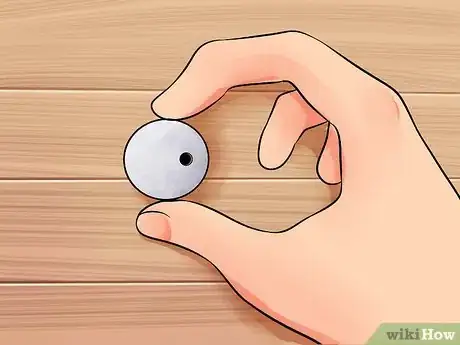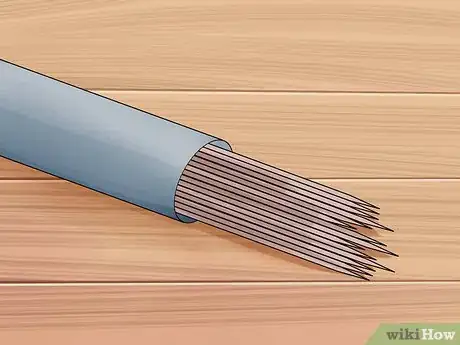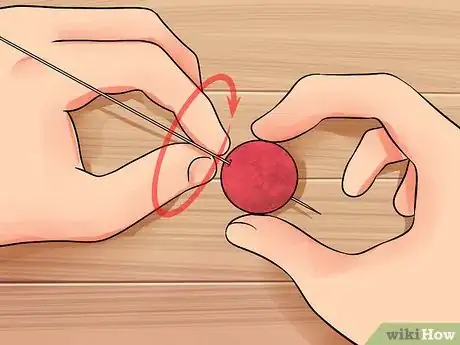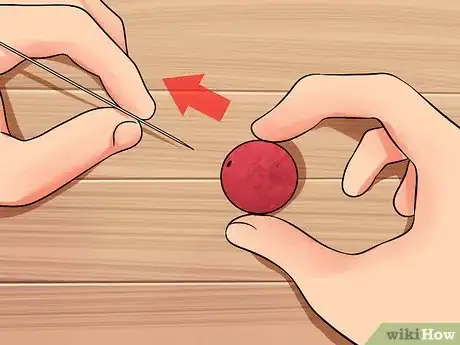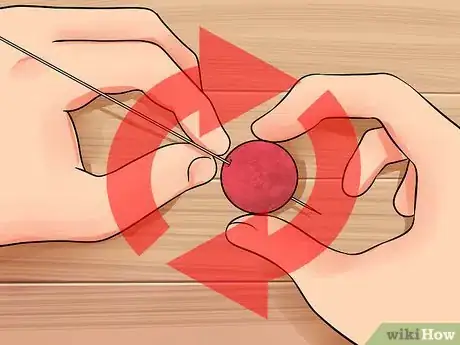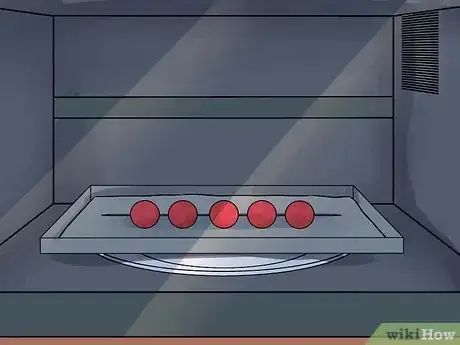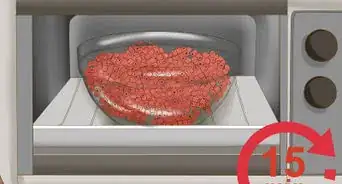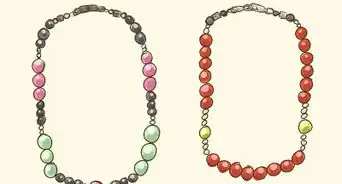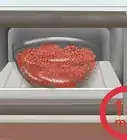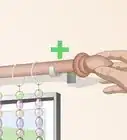X
wikiHow is a “wiki,” similar to Wikipedia, which means that many of our articles are co-written by multiple authors. To create this article, volunteer authors worked to edit and improve it over time.
This article has been viewed 66,563 times.
Learn more...
Drilling holes into beads will require patience and a steady hand. The exact technique will depend on the type of material used for the bead, but each method can be done with standard tools.
Steps
Method 1
Method 1 of 3:
Method One: Stone, Glass, and Wooden Beads
-
1Choose the drill. You can use a hand-held rotary tool or a conventional cordless drill, but either way, the tool should be fitted with a drill bit no larger than 1/8 inch (3.175 mm).[1]
- Note that smaller beads will require the use of even smaller drill bits.
- When drilling holes in glass or stone beads, you will need to use a diamond-tipped drill bit due to the hardness of the material.
- For wooden beads, a common drill bit or carbide drill bit should work well enough since these beads are made from a much softer material.
-
2Place the bead in putty. Press the bead firmly into toy putty or poster putty. The side you intend to drill into should face up.
- The purpose of the putty is to keep the bead still and stable as you drill into it. If preferred, a small clamp or similar surface could be used instead.
- Keep a thick layer of putter pressed beneath the bottom of the bead to prevent the drill tip from accidentally drilling into and damaging another surface.
- Holding the bead is not recommended. Due to the small size of the bead and the power of the tool, the tool could easily slip as you drill into the bead, injuring your hand in the process.
Advertisement -
3Mark the hole. Place a small dot on the bead using a fine-tip permanent marker. This dot should be centered directly over the spot you want the hole through.
- The dot can serve as a guide for the tip of your drill bit. It is not strictly necessary, but it might help you keep the hole centered.
-
4Submerge the bead in water. Place the putty and clay in a shallow tray, bowl, or cup. Add enough water to the container to keep the bead just barely submerged.
- The water will help keep the drill bit cool as you work, thereby preventing the tool from overheating during the process.
- To further reduce the risk of causing damage to your work surface, you may also want to place the dish of water on top of an acrylic cutting board. Alternatively, you can place a thick leather pad into the container if the container is large enough and the pad is small enough.
- Note that this can be dangerous when used around corded drills, which is why a cordless tool is strongly recommended. No matter what type of drill or rotary tool you use, however, work carefully to avoid getting excess water on the tool. Never hold the tool with wet hands, either.
-
5Touch the bit to the bead. Bring the drill bit down vertically over the bead so that it lightly touches the mark you created earlier. Turn on the tool for a second or so before switching it off.
- If the tool is drilling into the bead correctly, you should see some of the material come off and mix into the water.
- Quickly check the surface of the bead when you switch off the tool. You should already see an indentation where the hole is supposed to go.
-
6Slowly drill through to the other side. Position the tip of the bit over the indentation and switch the drill back on. Gradually work your way through the entire bead until the bit comes out of the opposite side.
- For best results, drill into the bead for one second, then pull the bit back up for another second. Drill back into it for another second and pull it back up for one more second. Repeat until you make it all the way through the bead.[2]
- Drilling in this manner washes the hole as you drill it and puts less pressure on the bead. Less pressure means a smaller risk of cracking or breaking.
- Make sure that you drill into the bead at a straight, vertical angle so that the finished hole is even.
- Stop as soon as you feel the drill bit break through the other surface. If you stop too soon, you can always continue drilling the hole until you complete it. If you stop too late, you may damage your working surface.
- Depending on the depth of the bead and the material you're working with, the drilling process can take anywhere from 30 seconds to 3 minutes.
-
7Check your work. After you finish drilling through the bead, pull the bit all the way out and turn off the tool. Check the hole to make sure that it is even and clear.
- If the hole looks finished, then the process is complete.
Advertisement
Method 2
Method 2 of 3:
Method Two: Baked Polymer Clay Beads
-
1Indent the surface just before baking. If possible, use a toothpick to poke a small hole or indentation into the bead before you bake it.
- The indentation should be centered over the position you plan to drill a hole through.
- This indentation can serve as a guide when you start drilling into the hardened, baked bead later.
- If you forget to make the indentation before you bake the beads, you can still poke a hole into the bead just after it bakes, while the clay is still warm and partially soft. You will need to use a rigid metal pin or needle instead of a toothpick, however.
- If you are working with polymer clay beads that were baked long ago and cannot create any indentation, consider at least marking the spot you want to drill a hole through with a pencil or marker.
-
2Choose the right tools. Since polymer clay is such a soft material, you should not use a power drill or power rotary tool to create a hole. All you need to use is an unpowered drill bit.
- The drill bit should be about as small as the size of the desired hole. This means sticking with drill bits 1/8 inch (3.175 mm) or smaller.
- Common drill bits should suffice. There is no need to use a harder bit material.
-
3Secure the bead. Place the bead in a small patch of toy putty or poster putty so that it will remain still during the drilling process.
- Alternatively, you can hold the bead with pliers or in between your fingers. Since you will not be using any power tools, it should be safe to hold the bead.
- A small clamp could also be used, but it usually isn't necessary.
-
4Drill slowly straight through the bead. Position the drill bit directly over the indentation. Use your fingers to twist through the bead, continuing at a steady pace until the bit pierces through the opposite side.[3]
- The drill bit should be straight and perpendicular to the guiding indentation previously created on the surface of the bead.
- Make sure that you are twisting the bit straight through the bead. Apply as little pressure as possible and avoid forcing the bit through the bead.
- Alternatively, you can hold the bit still while twisting the bead onto it.
- If you are unable to twist either the bit or the bead by hand, you could use a manual crank-style hand drill to ease the bit through. Do not use any power tools, however.
-
5Check the results. After drilling a hole into the bead, remove the bit and examine the hole to make sure that it is complete and even.
- At this point, the process is complete.
Advertisement
Method 3
Method 3 of 3:
Method Three: Unbaked Polymer Clay Beads
-
1Select piercing pins. Purchase clay bead piercing pins from any manufacturer that produces tools for working with clay.[4]
- If you are unable to find bead piercing pins, sharp skewers or large sewing pins might work well enough. The instrument you use simply needs a sharp, pointed tip and a sturdy metal shaft similar in thickness to 20 gauge wire. It also needs to be long enough to completely pierce through at least one bead.
-
2Push the pin into the bead. Lightly grasp the bead in between your fingers using your non-dominant hand. Using your dominant hand, gently push the sharp pin tip into the spot the hole needs to be at.
- Your fingers should be positioned on the smooth side of the bead and clear from the entrance or exit point of the desired hole.
- Hold the bead just lightly enough to keep it steady, but do not squeeze it.
-
3Twist and continue pushing. Twirl the piercing pin between your fingers as you push it through the entire bead. Continue twisting and pushing until the pin pokes out from the opposite side.
- You may also need to twist the bead lightly as you insert the pin.
- Keep the pin straight as you push it through. Work slowly and gently to minimize possible distortion to the shape of the bead.
-
4Pull the pin back. After pushing the pin all the way through to the other side of the bead, pull it back into the hole by about 0.4 to 0.8 inches (1 to 2 mm)
- As you push the pin through the bead, a little speck of clay will usually poke out from the opposite side. By pulling the pin back in, you can pull this speck back and prevent it from hardening onto the outer surface of the bead.
-
5Reshape the bead as needed. Mild distortion is fairly common, so you might need to use your fingers to gently reshape the bead before setting it.
- With the right piercing pin and the right technique, you may not encounter any distortion at all. It can take practice before getting the process right without misshaping the bead at all, though, so you should expect a little difficulty the first time you try it.
-
6Bake the clay. Place the skewered beads on a baking sheet lined with parchment paper or wax paper and bake them as you would bake any polymer clay piece.
- Check the instructions on your polymer clay label to determine the correct temperature and correct amount of time. In most cases, you will need to bake the clay beads for 15 to 20 minutes in an oven preheated to 275 degrees Fahrenheit (135 degrees Celsius).
- Most pins should be oven-safe, so you shouldn't need to remove them prior to baking. Check periodically during the baking process to make sure that the pin is not melting or smoking, though.
-
7Remove the pin and check the hole. Remove the finished clay beads from the oven and wait a few minutes for them to cool slightly. As soon as they are cool enough to touch, pick up each bead and pull the pin out through the entrance of the hole.
- It is best to remove the pin while the clay is still somewhat warm and soft.
- Check the hole after you remove the pin. It should be clear and complete from side to side.
- Once you finish this step, the process is complete.
Advertisement
Community Q&A
-
QuestionHow do I drill a hole in a plastic bead? The beads I have already have a hole, but I need another hole perpendicular to the first.
 T. ChinsenTop AnswererPurchase a vice drill, which is a pencil-shaped vice with small drill bits. They are available in craft stores. You may need to purchase smaller drill bits if the hole needed is very small. Follow the article instructions for drilling the hole. Run a cord through the current hole to align the bead on the putty at right angles to the new drill hole direction.
T. ChinsenTop AnswererPurchase a vice drill, which is a pencil-shaped vice with small drill bits. They are available in craft stores. You may need to purchase smaller drill bits if the hole needed is very small. Follow the article instructions for drilling the hole. Run a cord through the current hole to align the bead on the putty at right angles to the new drill hole direction.
Advertisement
Warnings
- Wear a dust mask and safety goggles when drilling into stone, glass, wood, or baked polymer clay. The drilling process can scatter a lot of dust and debris that could be harmful if inhaled. The dust can also act as an irritant if its gets into your eyes.⧼thumbs_response⧽
Advertisement
Things You'll Need
Stone, Glass, and Wooden Beads
- Cordless drill or hand-held rotary tool
- Drill bits, 1/8 inch (3.175 mm) or smaller, diamond-tipped (stone and glass) or carbide (wood)
- Toy putty or poster putty
- Permanent marker
- Shallow tray of water
- Acrylic cutting board or thick leather pad
Baked Polymer Clay Beads
- Toothpick, sewing needle, or pencil/marker
- Drill bit, 1/8 inch (3.175 mm) or smaller
- Toy putty, poster putty, or pliers (optional)
- Manual hand drill (optional)
Unbaked Polymer Clay Beads
- Bead piercing pins
- Baking sheet
- Wax paper or parchment paper
- Oven
References
About This Article
Advertisement
